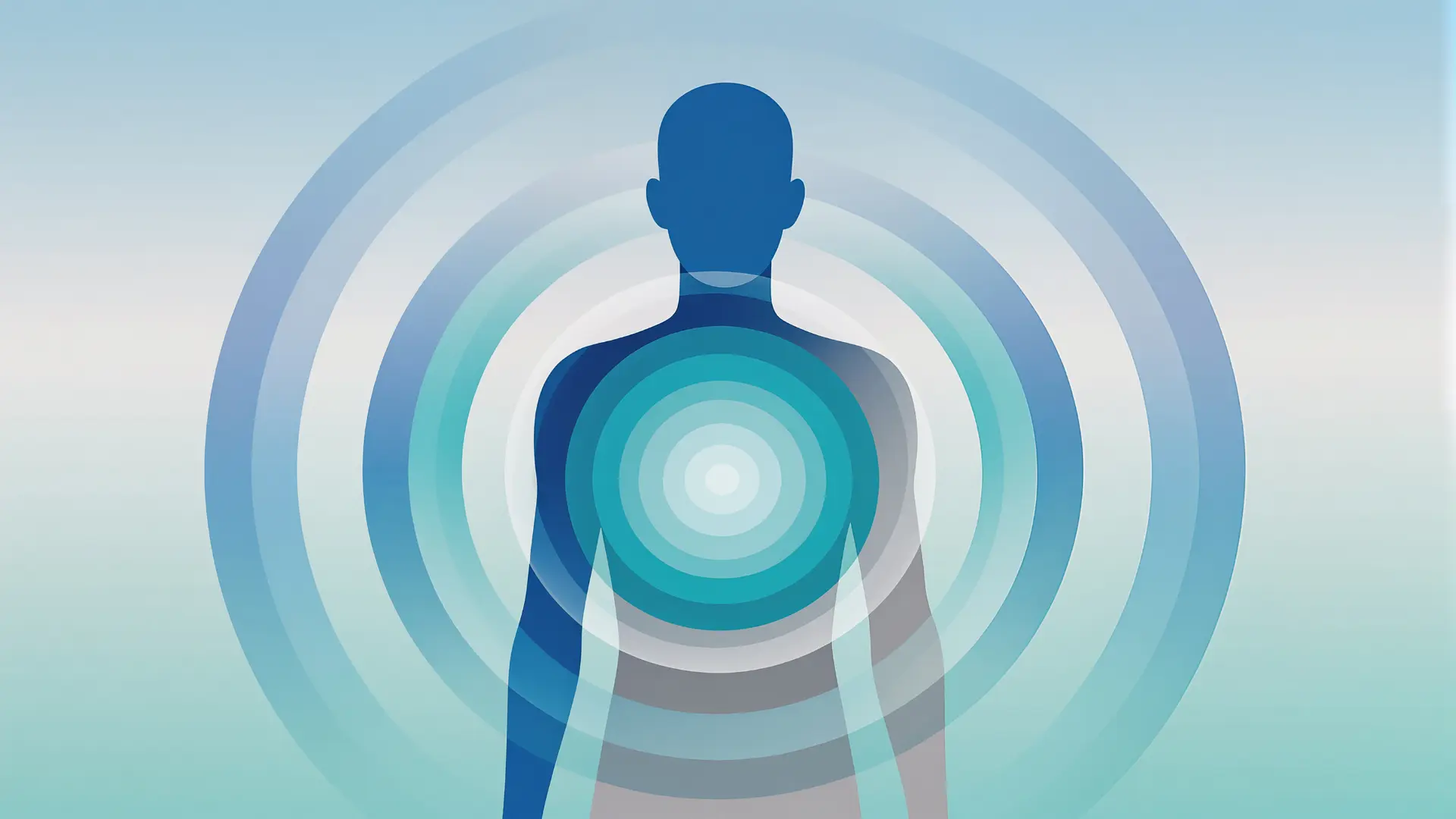Autogenic Training (AT) is a clinical relaxation technique that uses self-suggestion and passive concentration to consciously influence the body’s typically involuntary processes. Developed as a form of self-hypnosis, it teaches you to “self-generate” (autogenic) a state of deep calm by repeating a series of simple verbal formulas. This process gives you direct access to your autonomic nervous system, making it a powerful tool for managing stress, anxiety, and various psychosomatic conditions.
Definition and Principle
Autogenic Training is a structured mind-body practice where you use a series of six standard exercises to evoke the physiological sensations of deep relaxation. The core principle is that by passively concentrating on verbal cues suggesting heaviness and warmth, you can directly trigger the body’s “rest-and-digest” response. It is a skill that, with practice, allows you to calm your heart rate, slow your breathing, and release tension on command, effectively giving you conscious control over your own stress response.
Origins: The Work of Johannes Schultz
The technique was developed around the 1930s by the German psychiatrist and psychotherapist Johannes Heinrich Schultz. Schultz based his work on his observations of people in deep hypnotic states. He noticed that they consistently reported feelings of heaviness and warmth in their limbs. He theorized that he could teach his patients to induce this state themselves, without a hypnotist, by using simple verbal formulas (which is, technically speaking, a form of auto-hypnosis). After years of clinical research, he codified the six standard exercises that form the basis of Autogenic Training today.
The Core Principle: Passive Concentration
The key to Autogenic Training is the specific mental state required, known as passive concentration. Unlike active concentration, where you force your focus onto an object, passive concentration is a state of relaxed, effortless allowing. You simply repeat the verbal formula and observe any resulting sensations without striving, judgment, or trying to make it happen. If you don’t feel the sensation immediately, you don’t worry about it; you just continue to repeat the phrase gently. This non-striving attitude is crucial for allowing the body’s natural relaxation response to unfold.
Therapeutic Applications and Benefits
Autogenic Training is a well-researched clinical tool used to manage a variety of stress-related disorders. Its ability to down-regulate the sympathetic nervous system makes it highly effective for treating anxiety, insomnia, and high blood pressure. It is also commonly used to manage migraines and tension headaches. The primary benefits include a significant reduction in physiological stress markers, improved emotional regulation, and an enhanced sense of self-control and well-being.
The Six Standard Formulas
The training is taught progressively, with the practitioner mastering one formula before moving to the next. Each step builds upon the last to deepen the state of relaxation.
The Heaviness Formula
This is the foundational exercise, targeting the musculoskeletal system. You begin by focusing on your limbs, silently repeating a phrase like, “My right arm is very heavy.” This suggestion helps to release deep muscular tension. The practice is then expanded to include all limbs until the entire body feels pleasantly heavy and relaxed.
The Warmth Formula
Once the sensation of heaviness is established, the focus shifts to the circulatory system. The verbal formula, “My right arm is very warm,” is repeated to encourage peripheral vasodilation—the widening of blood vessels. This increases blood flow to the extremities and is a key physiological indicator of the relaxation response.
The Heartbeat Formula
The trainee then directs their attention inward to the cardiac system to achieve a calm and regular rhythm. A typical phrase is, “My heartbeat is calm and regular.” The goal is not to force the heart to slow down, but to passively observe it as it naturally calms in response to the body’s relaxed state.
The Breathing Formula
Next, the focus moves to the respiratory system. To encourage a state of passive observation and prevent conscious interference, the verbal formula often used is, “It breathes me.” This phrase fosters a sense of allowing the breath to happen naturally and effortlessly.
The Abdomen Formula
The practitioner concentrates on their solar plexus area (just below the ribs) to generate a feeling of warmth and relaxation in the body’s core. A representative phrase is, “My solar plexus is warm,” which helps to soothe the major nerve plexus in this region.
The Forehead Formula
This final standard exercise is performed by passively concentrating on a feeling of coolness in the forehead, using the phrase, “My forehead is cool.” This sensation is meant to soothe tension in the head and face, promoting a sense of mental clarity and calm.
Comparison to Other Relaxation Practices
While its goal is relaxation, AT’s method is distinct from other somatic practices like Progressive Muscle Relaxation or Psychosomatic Training.
AT vs. Progressive Muscle Relaxation (PMR)
AT is cognitive and passive, using mental suggestion to create relaxation. PMR is physical and active, using the tensing and releasing of muscles to achieve the same goal.
AT vs. Psychosomatic Training
In my Psychosomatic Training method, the Autogenic Training would be a component of a much larger system. In the Psychosomatic Training method, we use elements of suggestion similar to AT, but also integrate them with active techniques like ki/pranic energy manipulation, somatic awareness (interoception), and specific breathwork protocols to create a more comprehensive mind-body influence.
AT vs. Body Scan Meditation
Body scan meditation is a very similar practice, although it does not utilize the suggestive techniques of warmth and heaviness. Instead, it heavily relies on proprioception and interoception, where the adept consciously directs their attention to the specific body regions. In some variants of body scanning, there are also progressive components of tension-relieving techniques, although they do not follow the same structure as in the Autogenic Training.



